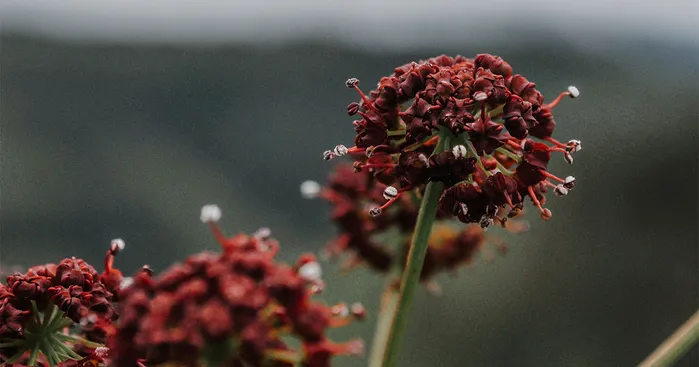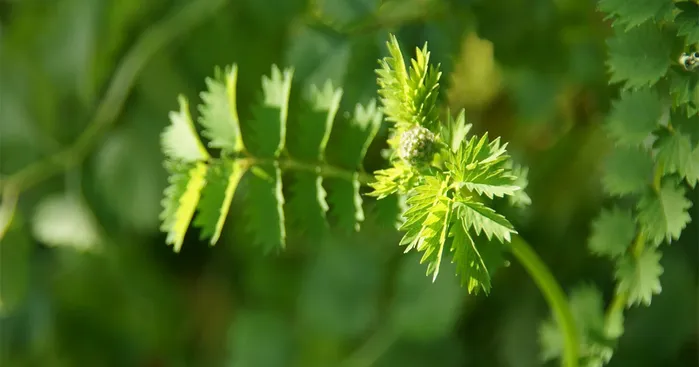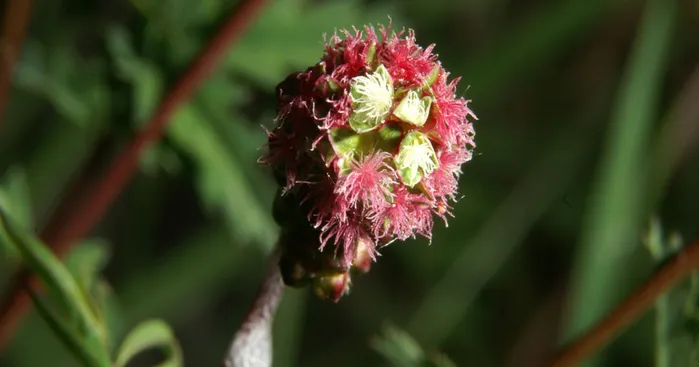Table of Contents

If you are looking for a fresh and flavorful herb to add to your salads, sandwiches, sauces, and drinks, you might want to try salad burnet.
It has a mild cucumber-like taste that can enhance many dishes and beverages.
But salad burnet is not just a tasty herb, it also has some amazing health benefits that you may not know about.
In this blog post, we will explore some of the health benefits of salad burnet and how you can use it in your daily diet.
Salad burnet general facts:

Overview:
Salad Burnet is a wild herb that can be eaten throughout the year.
The leaves have a bitter flavor reminiscent of cucumber skin.
In the winter and spring, new growth sprouts and can be used in salads.
More mature leaves can be added to soups and pottages.
This herb has been grown and used as a foodstuff for many centuries.
It has also been grown in Britain as a fodder crop for cattle.
Salad Burnet responds to being cut back by sprouting new leaves.
This trick of cutting back the foliage as the plant starts to produce its flower buds was the gardener’s method of keeping leaf production going.
Salad burnet: Historical overview

The salad burnet is a small, herbaceous plant that has been used for centuries for its medicinal properties.
It is native to Europe and Asia, but can now be found in many parts of the world.
The salad burnet is a member of the mint family and has a slightly peppery flavor.
In the Middle Ages, the salad burnet was used as a condiment and a garnish.
It was also used to treat a variety of ailments, including diarrhea, dysentery, and hemorrhages.
In the 16th century, the German physician Leonhart Fuchs named the salad burnet “Sanguisorba” (Latin for “blood-stopper”) because of its ability to stop bleeding.
The salad burnet was also used in traditional Chinese medicine to treat a variety of conditions, including gastric ulcers, intestinal infections, burns, and dermatitis.
The salad burnet is a safe and effective herb that can be used to treat a variety of ailments.
It is available in dried and fresh form and can be taken as a tea, tincture, or capsule.
If you are considering using the salad burnet for medicinal purposes, it is important to talk to your doctor first.
Other facts about salad burnet:

- The plant is low-growing and has a rosette of leaves.
- They have small flowers that can be pink or white.
- It blooms in the spring and summer.
- As for the leaves and flowers, they can be used to make tea.
- The plant can be found in meadows, fields, and roadsides.
- Salad burnet is a versatile medicinal herb that has been used for centuries to treat a variety of ailments.
Salad burnet nutritional values and health benefits:

Burnet contains a lot of vitamin C.
It has hemostatic properties: it stops internal bleeding.
It can be boiled (a handful for half a liter of water) to relieve sunburn or heal wounds.
Use as a compress on burned or injured areas.
It contains tannins, saponins (sanguisorbin), and flavonoids.
Tannins are astringent, slightly antiseptic, and hemostatic.
Rhizome decoction is effective against diarrhea, nose and gum bleeding, heavy menstruation, and urinary problems.
Saponin has anti-inflammatory and diaphoretic effect.
The dried buds are used to gargle against gum infections and sore throats.
A powerful hemostatic:
Burnet is astringent, which means it helps to tighten tissues.
This can help to reduce bleeding in the case of wounds, hemorrhoids, and burns.
Burnet contains tannins, which are compounds that have astringent properties.
Tannins work by binding to proteins in the body, which helps to tighten tissues and reduce inflammation.
Treats digestive disorders:
This herb is an anti-diarrheal that combats intestinal transit disorders.
It contains tannins, which can help to bind to bacteria in the gut and reduce diarrhea.
Salad burnet also contains flavonoids, which are antioxidants that can help to protect the gut lining and reduce inflammation.
Helps reduce metrorrhagia:
Salad burnet is an astringent, which means it helps to tighten tissues.
This can help to reduce bleeding in the case of metrorrhagia, which is a condition that causes bleeding from the uterus that is not caused by menstruation, a tumor, infection, or pregnancy.
Also, it contains tannins, which are compounds that have astringent properties.
Tannins work by binding to proteins in the body, which helps to tighten tissues and reduce inflammation.
Using salad burnet:

Sure, here is a rewritten version of the paragraph:
Sorrel leaves are a versatile ingredient that can be enjoyed in many different ways.
They can be eaten raw in salads, added to soups and pottages, or used to make a refreshing claret cup.
Sorrel leaves also have a long history of medicinal use and were once thought to have mood-boosting properties.
The bruised leaves of sorrel can also be used to make tasty infused vinegar.
This vinegar can be used to dress salads, marinate meats, or add a touch of acidity to sauces.
If you dry the leaves slowly, they retain their aroma and make a delightful tea.
Sorrel tea is a refreshing and invigorating beverage that can be enjoyed hot or cold.
Here are some additional ways to enjoy sorrel leaves:
- Sauté them with other vegetables for a flavorful side dish.
- Add them to a quiche or frittata for a touch of brightness.
- Use them to make a pesto or vinaigrette.
- Stuff them into chicken or fish before baking.
Sorrel leaves are a delicious and versatile ingredient that can be enjoyed in many different ways.
So next time you’re at the farmers market, be sure to pick up a bunch of sorrels and experiment with some of these recipes.
You won’t be disappointed!
Salad burnet biscuits:
Ingredients:
- ¼ tbsp. of dried salad burnet.
- 1 cup of flour.
- 2 Eggs.
- 1 cup of water.
- ½ tbsp. of pepper seeds.
- 1 tbsp of cumin.
Preparation:
- Grind 1 tablespoon cumin seeds, 1/2 tablespoon pepper seeds, and 1/4 dried burnet roots.
- To make the burnet cookie dough
- Add flour, egg yolk, and a little water to this crushed mixture to form a soft dough.
- Shape into small biscuits.
- Bake for 20 min at 160°C (th. 5-6) or under ashes.
- Let them cool down and serve to your loved ones.
